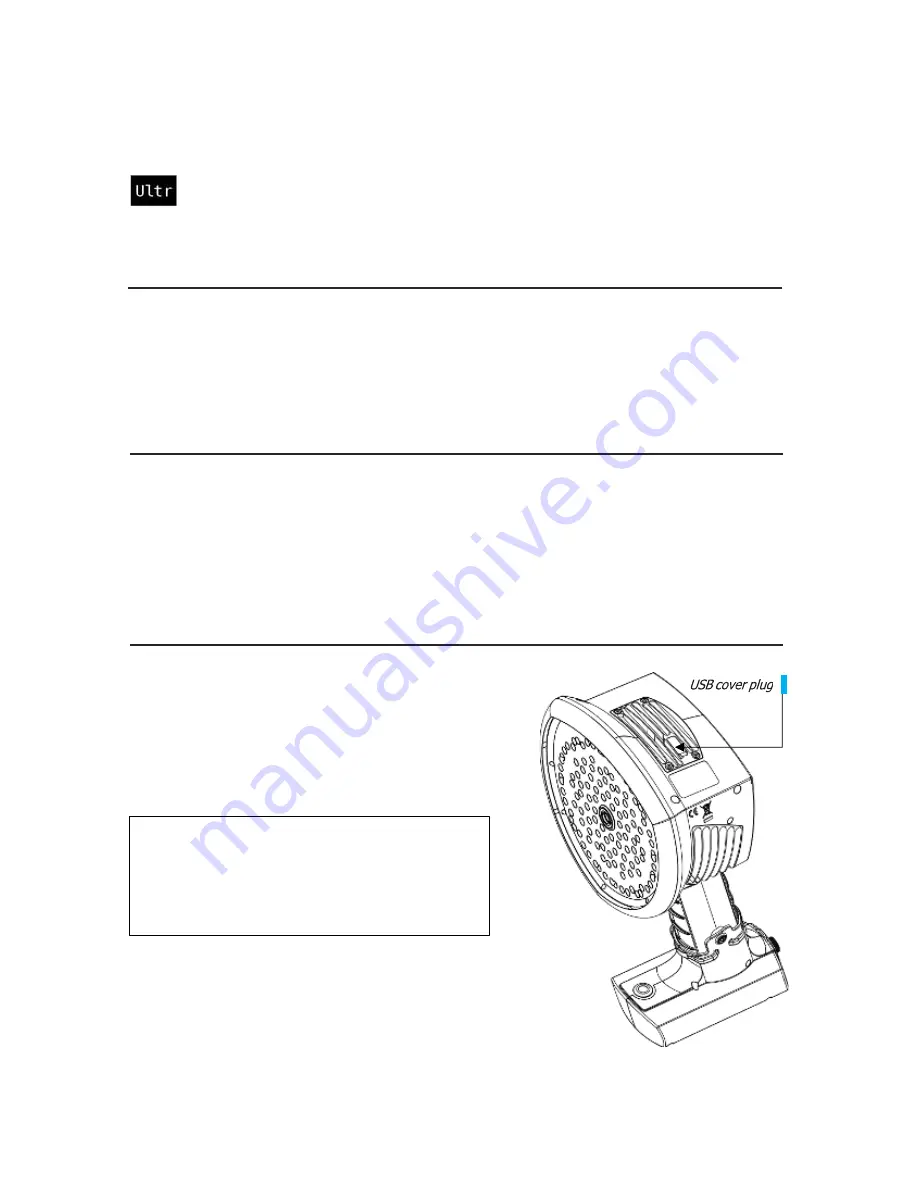
24
Image 12.
The location of the USB cover
plug.
4.8 Filters
Press the filter button on the top right corner of the camera’s screen to switch
between different filters. The available filters depend on the camera’s application
mode, you can choose to activate the relevant optimal filters for finding leaks of
partial discharges,For more information on the filters and optimization, see
section 5.1.1 as well
as 5.2.1
.
4.9 Real-time analysis
Real-
time analysis results are shown at the top of the camera’s screen. This includes the dB levels
from the strongest source, the location of the sound source is shown with a crosshair as well as
some analytics for the sound source. For details, see
section 5: Application - specific
features
.
4.10 Cloud upload
When connected to the Internet via WiFi, the UltraView will automatically upload any snapshots on
the device to the Cloud as long as
Upload snapshots
is turned on under
Snapshot browser
(section 4.4: Snapshot Browser)
. Snapshot upload can also be triggered manually, if the
automatic snapshot upload is turned off. Next to the
Snapshot Browser
button, the number of
snapshots currently on the device is shown. Two dots next to the number indicate that snapshots
are currently being uploaded to the cloud.
4.11 USB export
Snapshots in the UltraView can be exported to a USB
flash drive. Open the cover on top of the UltraView
(
Image 12
) and insert the memory stick in the USB
port. Check that the orientation of the memory stick
and the port is correct before inserting the stick.
The UltraView will recognize the inserted flash drive
and ask if you want to transfer snapshots to the USB
device. If you press Yes, the transfer will begin. During
the transfer, the progress will be displayed, and the
transfer can be aborted by pressing the Stop button.
Snapshots already transferred to the USB flash drive
!! NOTE: USE ONLY THE USB FLASH DRIVES
PROVIDED WITH THE ULTRAVIEW. OTHER
FLASH DRIVES ARE NOT GUARANTEED TO
WORK AND MAY LEAD TO LOSS OF DATA!!
0
























